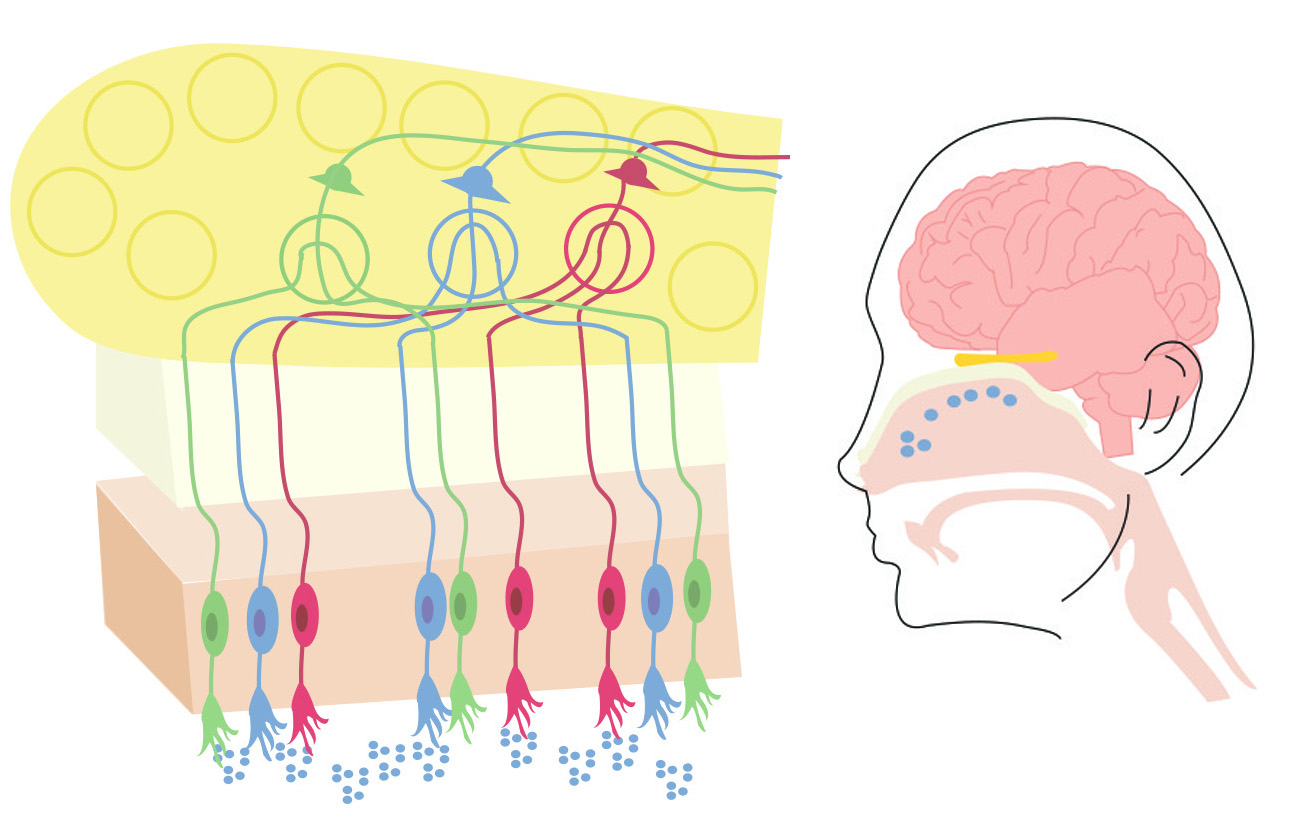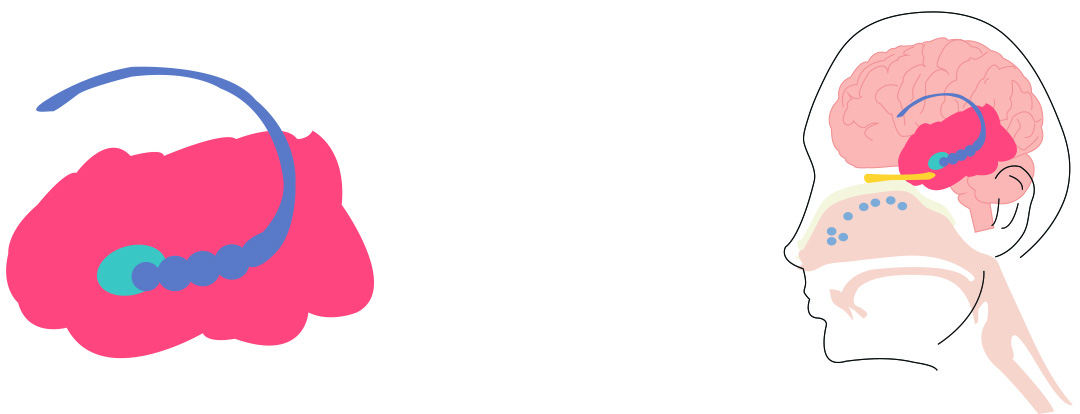From our tablet issue: Senses
A pool, a cup of coffee, or a bouquet of flowers can trigger a memory of a different place, person or moment in time. Why? Smell, more than any other sense, is directly linked with memory. Smell links to parts of the brain that process emotion and associative learning.
With each different odor people have conditioned responses. These responses are created the first time a person comes in contact with the smell, and can be triggered every time they smell it afterward.
The steps below show the science behind memories linked to smells.
Step 1: The Nose

- Airborne molecules, or odorants, are swept by air into the nostrils.
- The ordorant reaches the olfactory epithelium.
- There, odorant receptor cells dissolve the airborne molecules. The epithelium is coated with mucus to help the dissolving process.
- Odorants stimulate the olfactory receptor cells, which send an impulse to the olfactory bulb.
Step 2: The Bulb

- The olfactory bulb receives impulses from the olfactory receptor cells in the epithelium.
- Those signals are transferred to the glomerulus. There are 2,000 flomeruli in the olfactory bulb, about 3 percent of the body’s total.
- The glomerulus then passes the odor information to the brain.
Step 3: The Brain
- The glomerulus sends odor information to the limbic system, or the emotional center of the brain.
- Both the amaygdala, which processes emotion, and the hippocampus, which controls associative learning, receive signals.
- This is where scents become connected with a memory. The brain connects the odor with a person, thing or moment.
- If the smell is recognized by the brain again, the link to a memory is already there.





